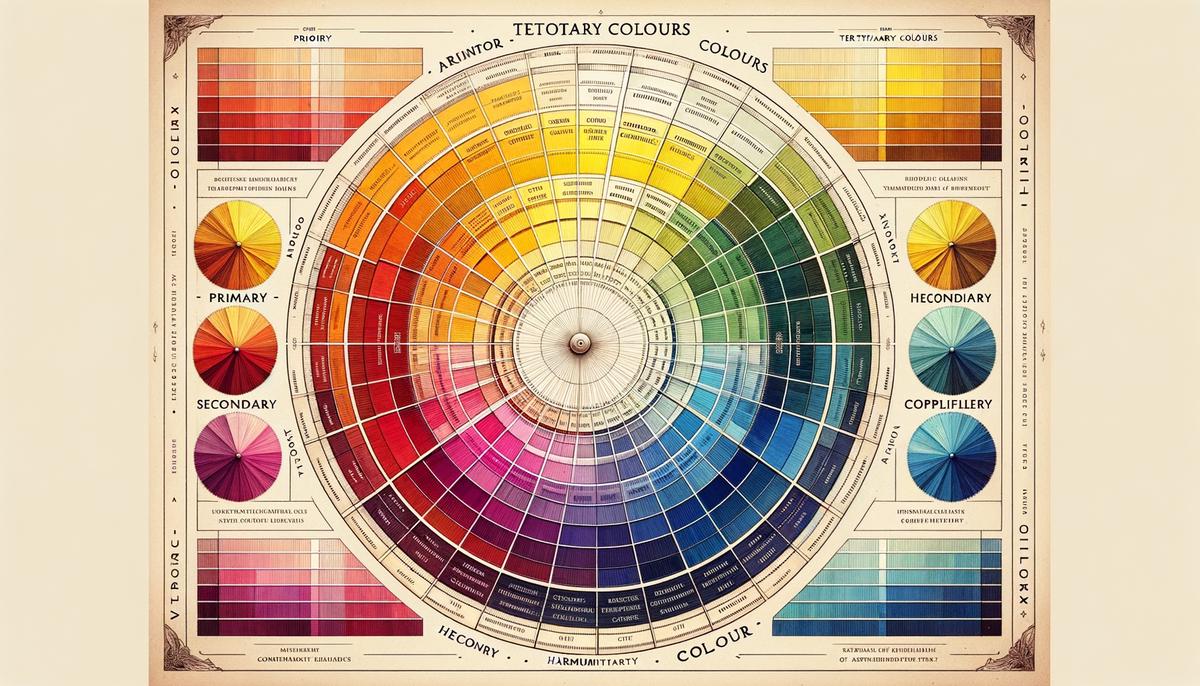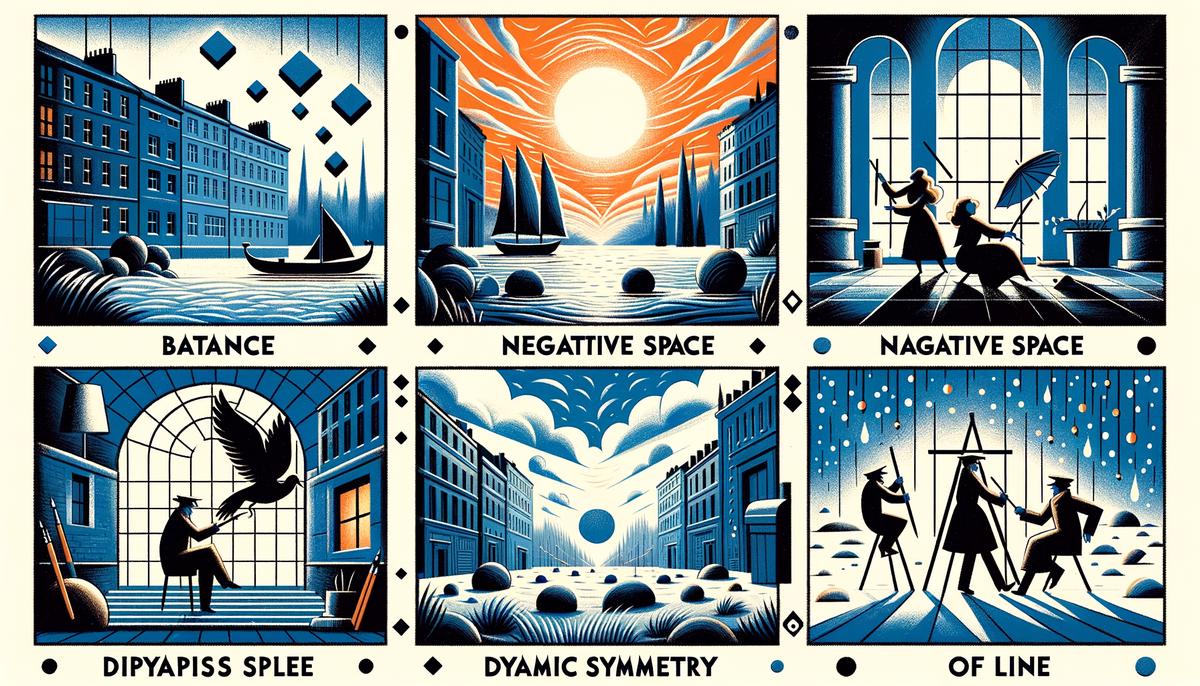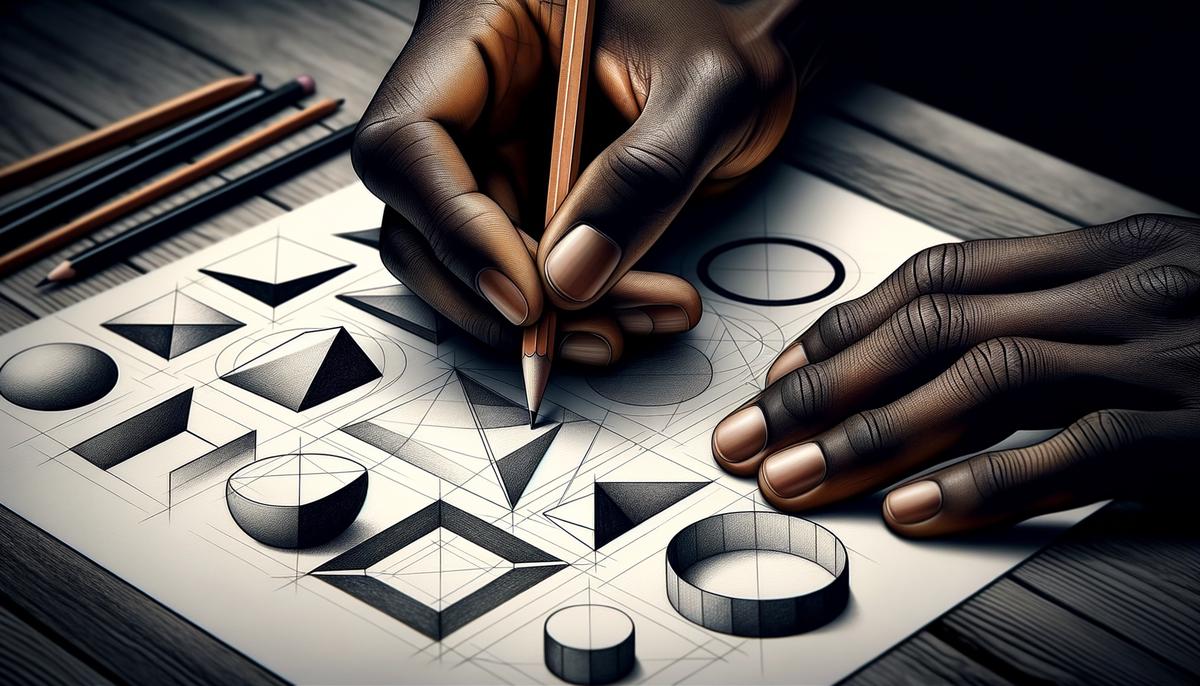Embarking on the exploration of artistic fundamentals, this article aims to illuminate the intricate dance between colour, composition, and drawing techniques. It seeks to unravel how these elements serve as the backbone of artistic expression, guiding artists in crafting works that resonate with depth and emotion. Through a detailed examination of each aspect, we aim to provide insights that empower artists to enhance their creative output.
Understanding Color Theory
Understanding Colour Theory to Boost Artistic Expression
Colour theory is a foundational principle in art that explores how colours interact and the effects they have on the viewer. By mastering colour theory, artists can significantly enhance their artistic expression, creating pieces that are dynamic, emotive, and communicative.
The colour wheel organizes colours in a circle, showing their relationships. Primary colours – red, blue, and yellow – are the source of all other colours. Combining these yields secondary colours – orange, green, and violet. Mixing further creates tertiary colours, blending a primary with a neighbouring secondary colour.
Utilizing the colour wheel enables artists to choose harmonious colours effectively.
- Complementary colours, opposite each other on the wheel, create vibrant contrasts.
- Analogous colours, next to each other, offer a cohesive look.
Colour theory also explores the emotional and psychological effects colours evoke. Warm colours like reds and oranges stimulate feelings of warmth and aggression, while cool colours like blues and greens tend to evoke calm and tranquility.1 This understanding allows artists to convey specific feelings through their choice of colour.
The value and saturation of colours—how light or dark, and how vivid—can alter the mood and depth of an artwork. Playing with these elements helps create perspective, highlight focal points, and build an intricate interplay of light and shadow.
Colour theory is an essential tool for artists to communicate powerfully, crafting pieces that resonate with viewers. By mastering its principles, artists unlock the potential to express ideas, evoke emotions, and bring their visions to life with extraordinary clarity and depth.

Exploring Composition and Layout
Delving into the World of Composition in Art
The secret to captivating artworks lies significantly in composition. When creating engaging pieces, composition isn't just beneficial—it's crucial.
At its core, composition entails the adept arrangement of elements within an artwork. It acts as the framework that guides the viewer's eye across the canvas, influencing where to look first, which paths to follow, and where to pause.
The rule of thirds is a fundamental compositional technique, dividing the canvas into nine equal segments. Placing focal elements along these lines or at their intersections achieves harmony and adds dynamic flair.
Negative space, the area surrounding main objects, is pivotal in creating depth and balance. Mastering negative space is key to crafting visually appealing compositions.
Achieving balance doesn't necessarily mean mirroring images symmetrically. It's about distributing visual weight judiciously across the frame.
Dynamic symmetry sees harmonious vibes sparked by varied, interconnected components.
Lines might seem mundane yet play a monumental role in setting the artwork's tone and direction. Leveraging diverse line work can profoundly impact how an artwork is perceived.
Composition ties the myriad elements of an artwork together into a cohesive whole. It's the invisible hand guiding viewers' emotions and interpretations, ensuring every glance divulges a new facet or emotion.
By weaving together balance, negative space, and strategic placement using compositional rules, artists bestow their works with compelling gravitas. An excellent composition is the soul that breathes life into art, transforming mundane captures into phenomenal masterpieces.

Practicing Basic Drawing Techniques
Mastering the Essentials: How Basic Drawing Skills Elevate Artistic Development
For any budding artist, diving into the magic of creation starts with the basics of drawing. More than mere pencil strokes on paper, basic drawing skills lay the foundation for an expansive artistic journey. This essential skill set shapes an artist's ability to translate imagination onto a tangible surface.
At the heart of drawing lies the mastery of shapes and forms – the building blocks of all artistic creations. Starting with simple geometric shapes helps artists grasp the complexities of more intricate forms found in nature and human-made objects. This understanding is pivotal in constructing everything from still-life compositions to grandiose landscapes and detailed portraits.
Drawing enhances an artist's observational skills, crafting a keen eye that sees beyond the superficial. Learning to draw trains the artist to notice subtleties in light, shadow, texture, and dimension. This heightened awareness becomes a powerful tool, enabling artists to capture the essence of their subject matter.
Basic drawing practice refines an artist's hand-eye coordination. As artists repeatedly translate real-world or imagined scenarios onto paper, the synchronized dance between eye, hand, and instrument becomes fluid. This skill allows for creating artworks that truly reflect the artist's intent.2
Drawing teaches artists the principles of proportion and perspective – crucial aspects that breathe life into artwork. Understanding proportion ensures elements within a composition relate harmoniously, while perspective imbues drawings with a three-dimensional quality.
At its core, drawing serves as a gateway to artistic expression and creativity. Basic drawing skills arm artists with the vocabulary needed to communicate their unique perspectives, emotions, and narratives. With pencil in hand, artists have the freedom to explore, experiment, and discover their distinct artistic voice.
Embarking on an artistic journey through drawing paves the way to exploring other mediums. The principles honed through drawing provide a solid foundation for painting, sculpture, or digital art. This versatility opens up endless possibilities for creative exploration.
Basic drawing skills shape an artist's ability to see, understand, and interpret the world. Drawing builds a strong foundation upon which creativity flourishes, proving indispensable in an artist's development. Through the discipline of drawing, artists not only learn to depict the world but also unlock the full potential of their artistic expression.

This exploration of art’s foundational elements reveals that mastery over colour theory, composition, and basic drawing techniques is not merely about improving technical skills; it’s about deepening our connection with the world around us. These principles equip artists with the means to translate complex emotions and narratives into visual form. As we close this discussion, let us remember that at the heart of every stroke lies an opportunity for expression—a chance to capture fleeting moments and immortalise them through our unique perspectives.
- Elliot AJ, Maier MA. Color psychology: effects of perceiving color on psychological functioning in humans. Annu Rev Psychol. 2014;65:95-120.
- Chamberlain R, McManus IC, Brunswick N, Rankin Q, Riley H, Kanai R. Drawing on the right side of the brain: a voxel-based morphometry analysis of observational drawing. Neuroimage. 2014 Sep;96:167-73.

























